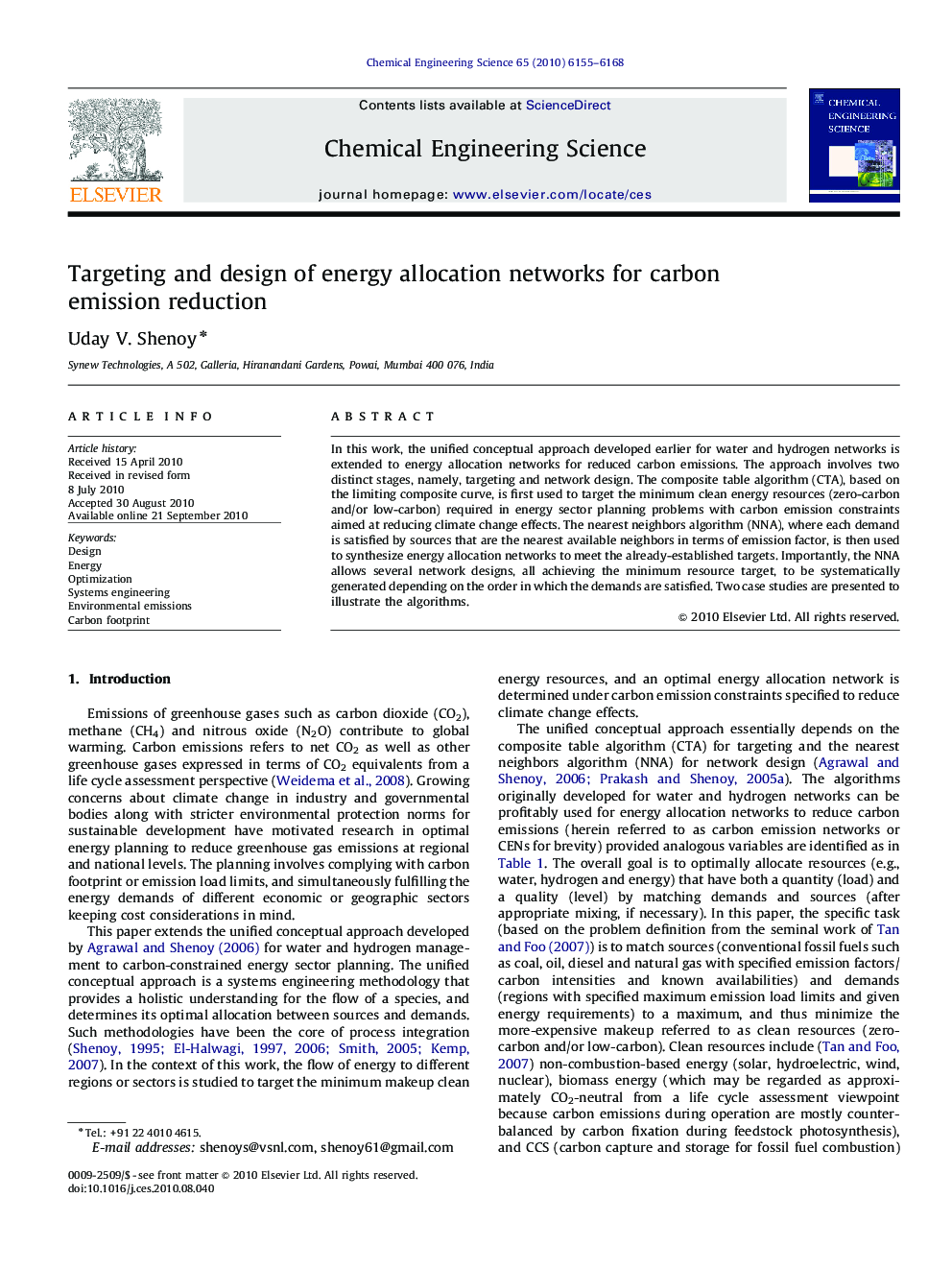| Article ID | Journal | Published Year | Pages | File Type |
|---|---|---|---|---|
| 156087 | Chemical Engineering Science | 2010 | 14 Pages |
In this work, the unified conceptual approach developed earlier for water and hydrogen networks is extended to energy allocation networks for reduced carbon emissions. The approach involves two distinct stages, namely, targeting and network design. The composite table algorithm (CTA), based on the limiting composite curve, is first used to target the minimum clean energy resources (zero-carbon and/or low-carbon) required in energy sector planning problems with carbon emission constraints aimed at reducing climate change effects. The nearest neighbors algorithm (NNA), where each demand is satisfied by sources that are the nearest available neighbors in terms of emission factor, is then used to synthesize energy allocation networks to meet the already-established targets. Importantly, the NNA allows several network designs, all achieving the minimum resource target, to be systematically generated depending on the order in which the demands are satisfied. Two case studies are presented to illustrate the algorithms.
